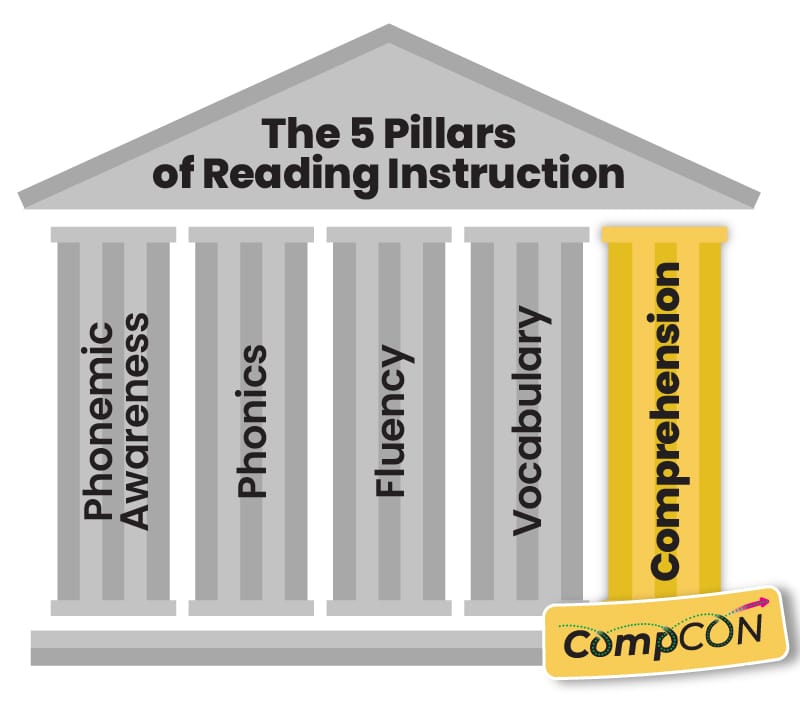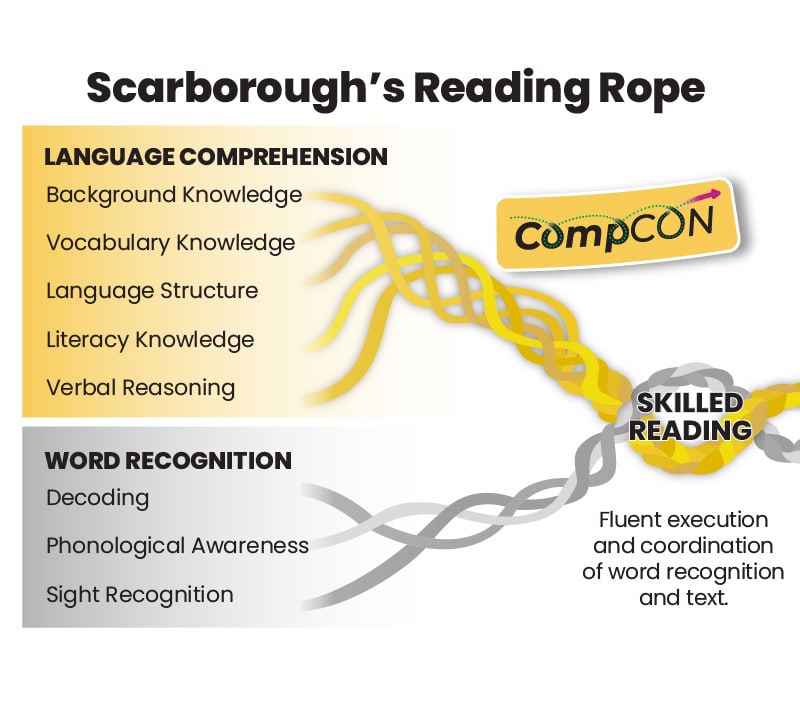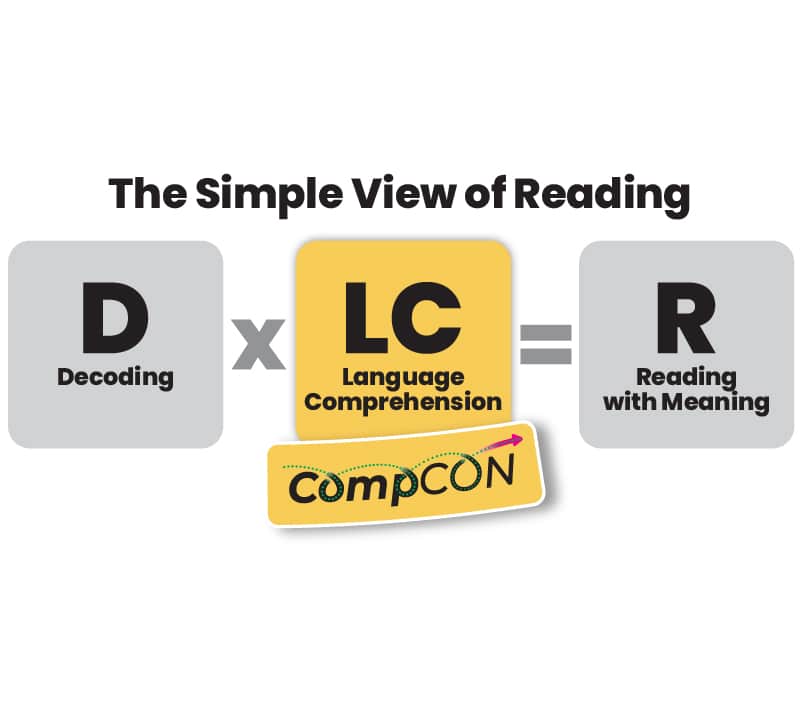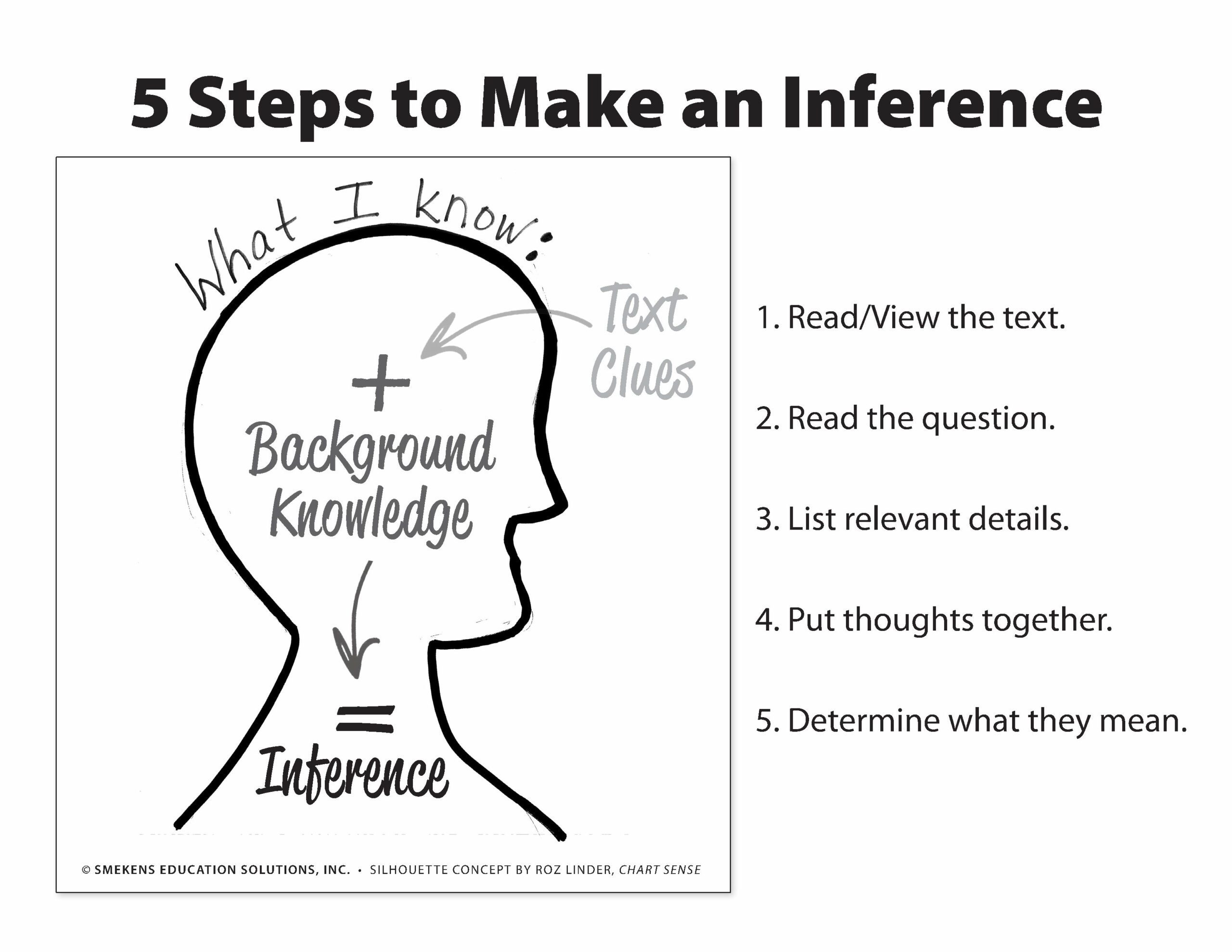
Get science of reading support
Apply inference in every comprehension lesson
When we read any type of text or media and make conclusions about ideas that are not literally stated, we make an inference.
An inference isn’t a unique skill taught in a single lesson. Instead, it’s a fundamental reading process that is part of every comprehension standard.
The process of making an inference can be broken down into five steps:
Step 1: Read the text.
Step 2: Read and understand the inferential question.
Step 3: List the relevant details.
Step 4: Put thoughts together.
Step 5: Determine what they mean.
An effective way to execute this five-step process during daily comprehension instruction is with Roz Linder’s Silhouette Head.
This simple graphic organizer represents what occurs within the reader’s head. It reveals how he first thinks about the literal text details and then thinks beyond them to make an inference.
After reading a passage and its question (Steps 1-2), a student uses his Reading Voice to identify relevant details from the text. Each text detail noted outside of the Silhouette Head includes an individual thought noted inside the Silhouette Head. This is thinking about the text.
Then the reader continues to use his Thinking Voice to think beyond the text (Step 4). The reader reviews the individual details & thoughts collected and considers what they imply. This leads to the inference or the answer (Step 5)– written in the “neck” of the Silhouette Head.
Use the Silhouette Head during every comprehension mini-lesson to reinforce the application of the inference process. Ultimately, the goal is for students to execute an inference independently, automatically, and without the graphic organizer.
2024 SUMMER CONFERENCE

Gain tools & techniques you need to
teach reading comprehension
VIRTUAL EVENT
June 11-12, 2024
FRENCH LICK RESORT
June 18-19, 2024
How CompCON supports the science of reading

Educational research surrounding the science of reading has heightened the need for teaching phonics and specifically decoding. But, as we know from the research conducted by the National Reading Panel, effective reading instruction requires a combination of direct, explicit teaching of all five pillars of literacy: phonological awareness, phonics, fluency, vocabulary, and comprehension.
While each of these components is important and necessary, CompCON focuses specifically on the pillar of reading comprehension. CompCON attendees spend two days learning practical and engaging lessons to deliver explicit, standards-based comprehension instruction.

Dr. Hollis Scarborough’s iconic Reading Rope reveals the essential strands for reading development. While many science of reading initiatives target the Word Recognition strand of Scarborough’s Reading Rope, CompCON addresses the Language Comprehension strand.
As important as it is that students learn how to decode words, they must simultaneously learn how to think about the words they are reading. This requires whole-class, teacher-led instruction on comprehension skills and strategies—and this is the focus of CompCON.

According to the Simple View of Reading formula, both word recognition and language comprehension are necessary to create a proficient reader.
The Simple View of Reading provides an argument for teaching decoding and phonics with intentionality. Likewise, direct instruction on teaching language comprehension is imperative as well.
Consequently, K-12 educators need to have whole-class lessons that target grade-level comprehension instruction—and this is the focus of CompCON.



